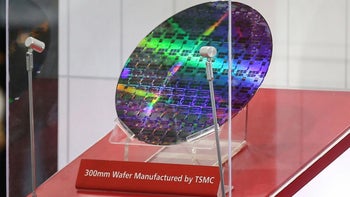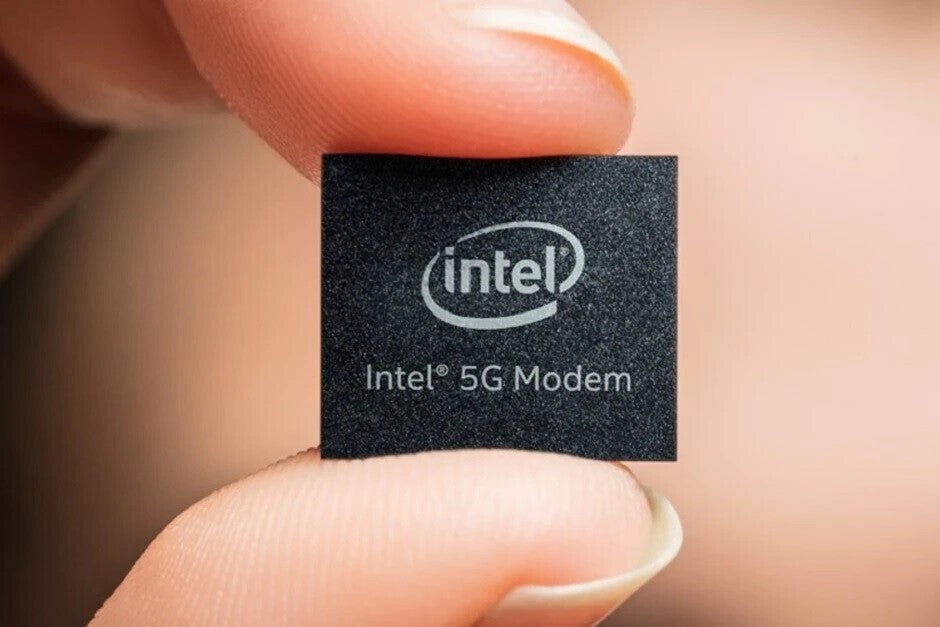Apple will design and TSMC will build 4nm 5G modem chip for 2023 iPhone line

Ever since a desperate Apple reached a settlement with Qualcomm in April 2019, the roadmap started to take shape. It gelled ever more after Apple paid $1 billion for Intel's modem chip business which included patents, equipment, leases, and most importantly, 2,200 Intel employees were included in the deal. Yes, it was clear that Apple was planning on designing its own 5G modem chip.
Apple wants to lessen its reliance on chip designer Qualcomm
Just the other day we passed along a rumor from Digitimes that said Apple was planning on using its own 5G modem starting with the 2023 iPhone models which would be the iPhone 15 series. The 5G modem chip will be a standalone component according to reports, independent from the 2023 A17 Bionic chipset.

Apple did not have confidence that Intel would be able to deliver a 5G modem chip that could replace Qualcomm's component
According to Nikkei Asia, part of the reason for Apple's decision to forge ahead with its own 5G modem chip design is to reduce its reliance on Qualcomm, the chip designer that currently provides Apple with its 5G modem chips for the iPhone.
Qualcomm has confirmed that Apple will be ordering a much smaller number of its modem chips and said that by 2023 it will be the source of only 20% of the component for the company. It doesn't take a mathematical whiz to compute that this means that Apple will supply itself with 80% of the modem chips it needs for the iPhone in 2023.
At one time, Apple thought so highly of Qualcomm's 5G modem chips that it pulled out of a deal it had with Intel to produce a 5G modem chip. Apple paid Qualcomm an undisclosed amount rumored to range anywhere from $4.5 billion to $6 billion to settle all of the legal issues it had with the company at the time. Apple reportedly did not have faith in Intel's ability to deliver a quality 5G modem chip in time.
Nikkei's report dovetails with the one written by Digitimes as both expect this move to be made by 2023. Four people familiar with Apple's plans told the Nikkei that the 5G modem chip will be manufactured by TSMC using the latter's 4nm process node. Two people briefed on the situation say that Apple is working on its own radio frequency and millimeter-wave components that will work alongside its modem chip.
While Apple designs the A-series chipsets that it uses for the iPhone and iPad for many, many years, designing a modem chip is arguably more complicated since it must be backward compatible with older connectivity standards such as 2G and 3G, up to the more currently used 4G and 5G platforms. The reason why Apple is waiting until 2023 to use its new 5G
modem chip is due to all of the time it will take global carriers to verify and test the new component.
Nikkei says that TSMC will build next year's A16 Bionic using a 4nm process node instead of 3nm
The Nikkei report also takes a shot at answering a major question regarding the chips that Apple will use on next year's iPhone 14 series. Originally, TSMC was hoping to have started mass production of its 3nm process node in time to use it to build the A16 Bionic. But earlier this year, TSMC admitted that the complexity of using 3nm was forcing a delay in the volume production of 3nm chips and as a result, volume production at 3nm would not start until the second half of 2023.
The delay would not allow TSMC to churn out the A16 Bionic using the 3nm process node and as a result, the A16 Bionic chipset could be made using the 4nm or 5nm process. But recently Digitimes said that TSMC was back on track and could start volume production of 3nm chips by the second half of 2022 which would make it a tight squeeze, but still give the world's largest independent foundry a shot at building the A16 Bionic using its 3nm process node.
But the Nikkei says that the iPhone 14 series will be powered by chips using TSMC's 4nm process. As for the 3nm node, Apple will use it first to power some iPad models next year before it is employed to build the A17 Bionic which will power the iPhone 15 lineup.
Putting it simply, the lower the process node number, the higher the number of transistors that fit inside square mm. The higher the number of transistors, the more powerful and energy-efficient a chip is.










Things that are NOT allowed: